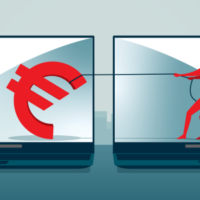
An African grey parrot, a common boa, a pangolin … these are not just animals in the wild; they are commodities advertised and sold on social media every day.
Once confined to shadowy backroom deals, the illegal wildlife trade (IWT) has gone digital, thriving on social media and encrypted platforms.1
Data from May to July 2024 showed that 477 advertisements were posted online for 18 protected species in Brazil and South Africa, with 78% of the ads posted on social media marketplaces such as Facebook.2
Behind these disturbing numbers is the Global Monitoring System (GMS), an artificial intelligence (AI)-powered tool which connects data hubs in key countries to track and analyze online illicit wildlife markets worldwide.3
Developed by ECO-SOLVE, a groundbreaking European Union (EU)-funded initiative led by the Global Initiative Against Transnational Organized Crime (GI-TOC), its mission is to disrupt trafficking networks, expose corruption, empower communities and fund innovative solutions.4,5
How is this initiative turning the tide against wildlife crime? Let us take a closer look at its groundbreaking approaches.
Disrupting the Illegal Wildlife Trade
GMS monitors illegal wildlife markets across social media and e-commerce platforms through data hubs in six key countries: Brazil, Colombia, Thailand, Indonesia, Nigeria and South Africa.6
By the time of this article’s publication, it had already detected 5,791 illicit postings, featuring live animals, lion pelts, whale teeth, ivory and more.7
While the data exposes key trends, it also highlights a web of additional challenges unfolding on the ground. In collaboration with Brazilian institutions, ECO-SOLVE has traced the illegal trade routes of the pirarucu, a large fish indigenous to the Amazon basin, and studied its connection to cocaine trafficking.8
In the first three months of the investigation, ECO-SOLVE identified 150 illicit pirarucu trade advertisements. These ads came from 74 unique sellers, though 65% of ads came from just 20 sellers, many of which were registered businesses. Most sales involved salted or dried meat, with occasional use of fake images and accounts to maintain market presence.9
Analyzing pirarucu seizure data from 2000 to 2024, ECO-SOLVE also found a correlation between pirarucu confiscations and cocaine seizures in the Amazonas state. This finding supports reports of pirarucu being used to conceal smuggled cocaine and reveals a stronger correlation between the two illicit trades than what was previously known.10
When it comes to these types of investigations, one of biggest challenges ECO-SOLVE faces is the speed at which traffickers adapt. “They constantly change the way they advertise, using new keywords, emojis or coded language,” says Russell Gray, head of ECO-SOLVE Data Component. “And they hop between different platforms or move conversations onto encrypted messaging apps like WhatsApp or Telegram to avoid detection. That makes it really difficult to track transactions after initial online postings.”11
Many ads lack enough detail to confirm the species, the seller’s legitimacy or whether the sale is legal, especially for CITES II species—animals and plants that are not necessarily threatened with extinction but may become so if their trade is not regulated.12
To tackle these issues, along with the sheer amount of data online, ECO-SOLVE is using open-source intelligence trained analysts and both manual and AI-powered web scrapers.13
In the future, GMS will incorporate AI image recognition.14 “It’s a fast-moving problem, but we’re making sure our approach evolves just as quickly,” Gray says.15
Exposing Elite Corruption
Beyond AI-powered tools, ECO-SOLVE aims to uncover evidence of elite-level corruption behind IWF and other green crimes.16
The 2023 Global Organized Crime Index by the Global Initiative Against Transnational Organized Crime found that in 36 countries, especially in Africa, Asia and the Americas, state-embedded actors play a key role in enabling and driving environmental crimes. These actors often oversee the natural resources of their country and may redirect profits for personal gain.17
Through exposés from investigative journalists, nongovernmental organizations and media houses, ECO-SOLVE hopes to generate public outrage and demands for accountability.18, 19, 20
“In our work we try to find a balance between naming those that are involved as well as explaining how the system works in order to raise the risk and cost for corrupt elites,” Gray states.21
“One key component of our work is also bringing local voices to the global multilateral system to help raise awareness about the investigations and local concerns,” Gray continues. “[We] make sure that civil society voices are heard and contribute to improved anti-corruption efforts at the international, national and local levels.”22
Many examples can be found in the 2024 Meeting Report on the Asia-Pacific region. One case highlighted was the work of a group of investigative journalists in Indonesia.23
Korindo Group, Indonesia’s largest logging and palm oil producer, long notorious for environmental destruction, was found to have paid a suspicious $22 million "consultancy fee" tied to a major land deal. Since plantation permits in Indonesia usually have minimal official costs, the payment raised concerns of possible bribery. This was supported by the history of corruption among officials overseeing the sector.24
“ECO-SOLVE seeks to include grassroots civil society and communities in global anti-corruption efforts as well as provide them with an additional platform to connect and raise awareness on local concerns,” Gray says.25
“Where relevant, we also compile targeted briefs for law enforcement (LE) and financial institutions which we share with trusted partners.”26
Empowerment of Communities
Empowering local communities affected by environmental crimes is another pillar of ECO-SOLVE’s mission. By amplifying their voices and integrating their knowledge into policy discussions, local communities can contribute to more effective policing while actively engaging in and shaping global debates.27
One major challenge is the mistrust that communities often have toward local LE. Historical grievances, corruption and inadequate protection of environmental defenders contribute to this wariness.
In 2024, Honduran environmental defender Juan López was assassinated after advocating against an iron oxide mining project in which the Honduran government was accused of colluding with private interests.28 In 2025, indigenous guards of Peru’s Wampis Nation disarmed policemen escorting illegal mining machinery on the Amazonian frontier with Ecuador.29
To counter this, ECO-SOLVE uses a carefully designed, context-based methodology to build trust between communities and LE agencies. The process starts by introducing the program to the communities. This in turn fosters connections and allows to collect insights into the local context and needs.30
“An initial assessment is then conducted to determine where it is feasible to facilitate direct dialogues between communities and [LE],” Gray says. “If the context allows, these dialogues are held, as we successfully did in Indonesia. In countries where tensions or historical mistrust make direct engagement challenging, such as Brazil, ECO-SOLVE focuses on building trust separately with each party and identifying opportunities for future collaboration.”31
Based on the dialogues, ECO-SOLVE’s grant program is put into action to find and fund local projects focused on combating and preventing environmental crimes. Both the grant funding and the full ECO-SOLVE program are financed by the EU Illicit Flows Programme. An essential condition for receiving these grants is the communities’ willingness to work with and share information with LE authorities.32
“This approach has already resulted in local-level collaborations between communities and [LE],” Gray states.
In the future, ECO-SOLVE intends to implement this model in Colombia and the Democratic Republic of Congo.33
A Persistent Issue
While ECO-SOLVE’s mission is set to conclude in 2026 (this could change depending on funding received), the threat of cyber-enabled wildlife crime persists.34
Traffickers constantly adapt, leveraging new technologies and financial tools to evade detection. Decentralized marketplaces, AI-generated ads and deepfake technology are making it harder to detect online wildlife trafficking. The only way forward is continuous innovation.35
“While the project ends in 2026, we are operating this project in hopes that our currently established and future partnerships, capacity building efforts and project goals can establish sustained monitoring efforts,” Gray says.36
ECO-SOLVE is working to create scalable solutions that engage other organizations tracking online IWT, aiming to dismantle operational silos, clarify areas of overlap and transform shared challenges into collaborative opportunities.37
They are also seeking cooperation with anti-money laundering (AML) specialists.38
“Following-the-money and understanding where the profits of environmental crime ultimately end up is a core area of the GI-TOC’s work,” Gray states. “We seek to understand the supply chains of environmental crime, where payments are being made along the way and how dirty money is laundered and invested.”39
ECO-SOLVE is open to collaboration and information sharing on AML typologies, emerging trends and key insights. They also welcome the opportunity to provide briefings to AML specialists on their findings and to exchange experiences and expertise.40
If you are interested in partnering with ECO-SOLVE or accessing their insights, visit https://www.ecosolve.eco/ to learn more and get in touch.
Stefano Siggia, CAMS, senior consultant, Pideeco, Belgium, stefano@pideeco.be, ![]()
- “Monitoring online illegal wildlife trade,” Global Initiative Against Transnational Organized Crime, October 3, 2024, https://globalinitiative.net/analysis/monitoring-online-illegal-wildlife-trade-online-brazil-and-south-africa/
- Ibid.
- “About,” ECO-SOLVE, https://www.ecosolve.eco/about
- “ECO-SOLVE—Innovative solutions against environmental crime, European Commission, March 15, 2024, https://fpi.ec.europa.eu/projects/ecosolve-innovative-solutions-against-environmental-crime_en?prefLang=es
- “ECO-SOLVE: Enhanced Solutions for Tackling Environmental Crimes,” ECO-SOLVE, https://page.globalinitiative.net/eco-solve/
- “GMS Dashboard,” ECO-SOLVE, https://www.ecosolve.eco/dashboard
- Ibid.
- “Monitoring online illegal wildlife trade,” Global Initiative Against Transnational Organized Crime, October 3, 2024, https://globalinitiative.net/analysis/monitoring-online-illegal-wildlife-trade-online-brazil-and-south-africa/
- Ibid.
- Ibid.
- This is from a personal interview with Russell Gray conducted on March 5, 2025.
- Ibid.
- Ibid.
- “New EU-Funded Project to Combat Environmental Crimes Using AI And Open-Source Intelligence,” Global Initiative Against Transnational Organized Crime, March 20, 2024, https://globalinitiative.net/announcements/eco-solve-launch-press-release/
- This is from a personal interview with Russell Gray conducted on March 5, 2025.
- “ECO-SOLVE: Enhanced Solutions for Tackling Environmental Crimes,” ECO-SOLVE, https://page.globalinitiative.net/eco-solve/
- Kristina Amerhauser, “On the line: Can exposure reporting disrupt organized environmental crime?” Global Initiative Against Transnational Organized Crime, March 14, 2024, https://globalinitiative.net/analysis/exposure-reporting-environmental-crime-disruption/
- Ibid.
- Ibid.
- This is from a personal interview with Russell Gray conducted on March 5, 2025.
- Ibid.
- Ibid.
- “Exposing Elite Protection and Corruption in Environmental Crime Across South East Asia and Oceania,” ECO-SOLVE, August 2024, https://globalinitiative.net/wp-content/uploads/2024/08/Eco-solve-Exposing-elite-protection-and-corruption-in-environmental-crime-across-South-East-Asia-and-Oceania-August-2024.pdf
- Ibid.
- This is from a personal interview with Russell Gray conducted on March 5, 2025
- Ibid.
- “ECO-SOLVE: Enhanced Solutions for Tackling Environmental Crimes,” ECO-SOLVE, https://page.globalinitiative.net/eco-solve/
- Megan Janetsky, “He fought to save jungles in Honduras. Now his killing haunts environmental defenders,” AP News, December 20, 2024, https://apnews.com/article/honduras-environment-killing-juan-lopez-mine-colon-f7da63bf702f0cee2eb712d78e54ab3c
- Dan Collyns, “Stop-and-search, fire ants and stinging nettles: Doling out justice to illegal miners in Peru’s Amazon,” The Guardian, March 24, 2025, https://www.theguardian.com/global-development/2025/mar/24/indigenous-guard-peru-illegal-miners-wampis
- This is from a personal interview with Russell Gray conducted on March 5, 2025.
- Ibid.
- Ibid.
- Ibid.
- “ECO-SOLVE— Innovative solutions against environmental crime, European Commission, March 15, 2024, https://fpi.ec.europa.eu/projects/ecosolve-innovative-solutions-against-environmental-crime_en?prefLang=es
- This is from a personal interview with Russell Gray conducted on March 5, 2025.
- Ibid.
- This is from a personal interview with Russell Gray conducted on April 3, 2025.
- This is from a personal interview with Russell Gray conducted on March 5, 2025
- Ibid.
- Ibid.










